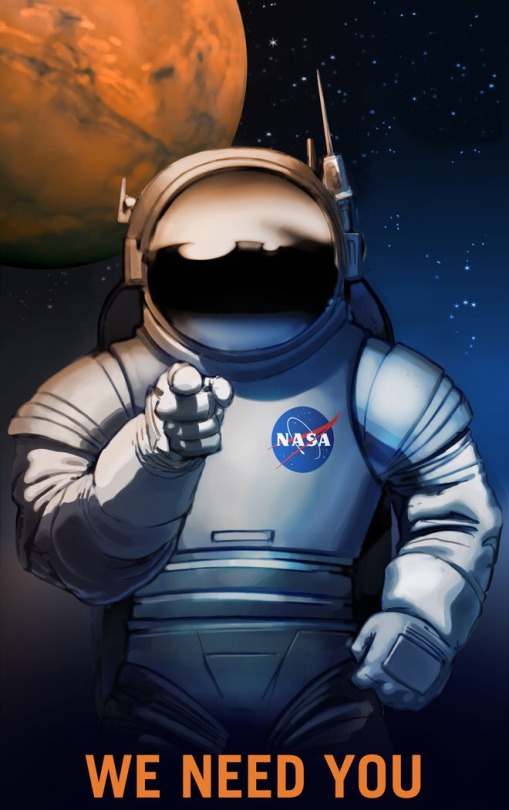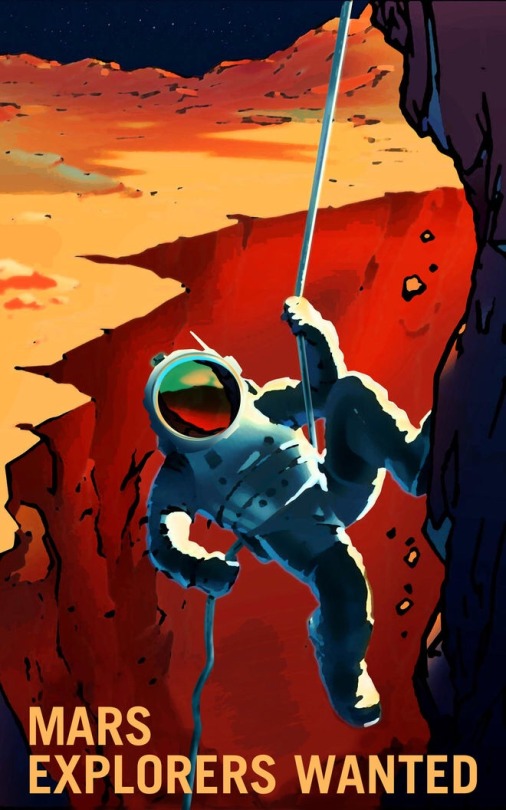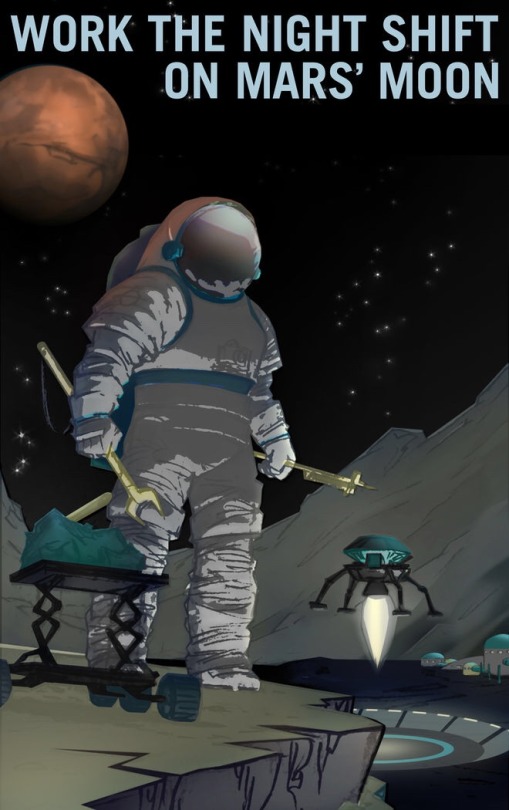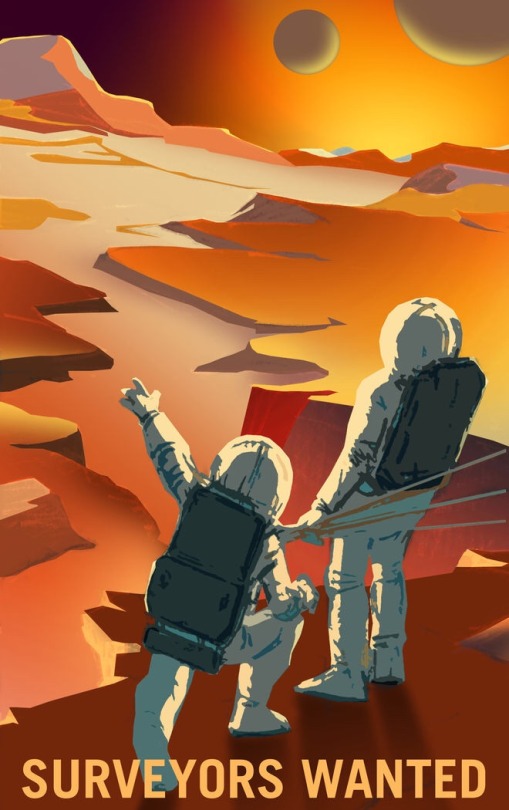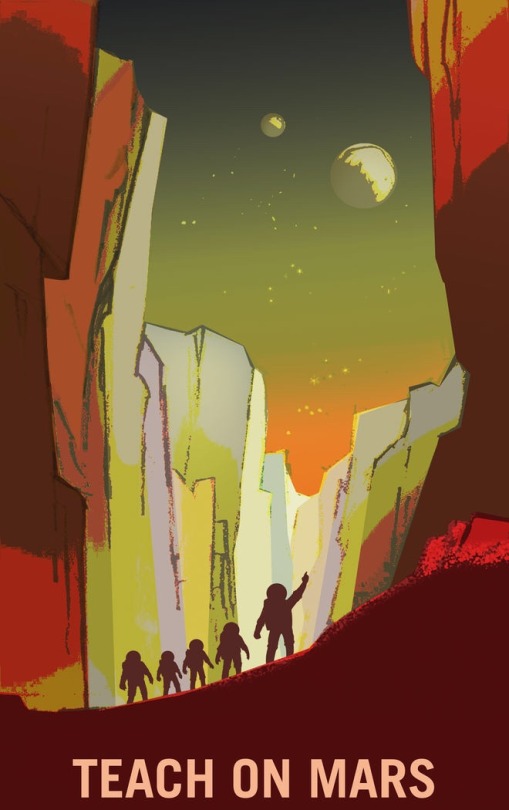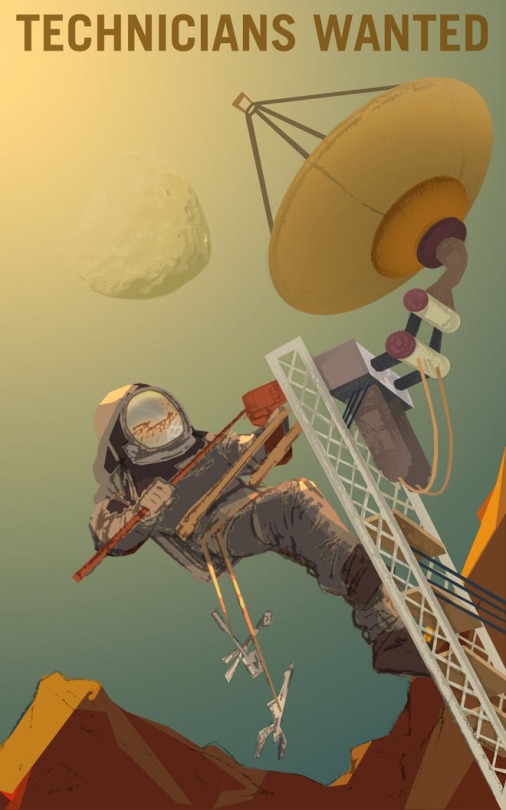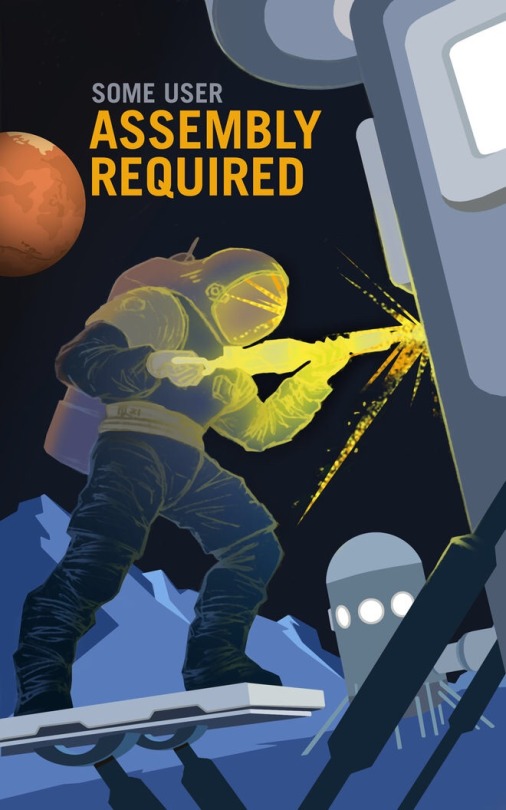Living And Working Aboard Station
Living and Working Aboard Station
Join us on Facebook Live for a conversation with astronaut Kate Rubins and the director of the National Institutes for Health on Tuesday, October 18 at 11:15 a.m. ET.
Astronaut Kate Rubins has conducted out of this world research aboard Earth’s only orbiting laboratory. During her time aboard the International Space Station, she became the first person to sequence DNA in space. On Tuesday, she’ll be live on Facebook with National Institute of Health director Francis Collins, who led the effort to map the human genome. You can submit questions for Kate using the hashtag #SpaceChat on Twitter, or during the live event. Here’s a primer on the science this PhD astronaut has been conducting to help inspire your questions:

Kate has a background in genomics (a branch of molecular genetics that deals with the study of genomes,specifically the identification and sequencing of their constituent genes and the application of this knowledge in medicine, pharmacy,agriculture, and other fields). When she began her tenure on the station, zero base pairs of DNA had been sequenced in space. Within just a few weeks, she and the Biomolecule Sequencer team had sequenced their one billionth base of DNA aboard the orbital platform.
“I [have a] genomics background, [so] I get really excited about that kind of stuff,” Rubins said in a downlink shortly after reaching the one billion base pairs sequenced goal.
Learn more about this achievement:
+First DNA Sequencing in Space a Game Changer
+Science in Short: One Billion Base Pairs Sequenced
Why is DNA Sequencing in Space a Big Deal?
A space-based DNA sequencer could identify microbes, diagnose diseases and understand crew member health, and potentially help detect DNA-based life elsewhere in the solar system.
+Why Sequencing DNA in Space is a Big Deal
https://youtu.be/1N0qm8HcFRI
Miss the Reddit AMA on the subject? Here’s a transcript:
+NASA AMA: We just sequenced DNA in space for the first time. Ask us anything!
NASA and Its Partnerships

We’re not doing this alone. Just like the DNA sequencing was a collaborative project with industry, so is the Eli Lilly Hard to Wet Surfaces investigation. In this experiment aboard the station, astronauts will study how certain materials used in the pharmaceutical industry dissolve in water while in microgravity. Results from this investigation could help improve the design of tablets that dissolve in the body to deliver drugs, thereby improving drug design for medicines used in space and on Earth. Learn more about what we and our partners are doing:
+Eli Lilly Hard to Wet Surfaces – been happening the last week and a half or so
Researchers to Test How Solids Dissolve in Space to Design Better Tablets and Pills on Earth
With our colleagues at the Stanford University School of Medicine, we’re also investigating the effects of spaceflight on stem cell-derived heart cells, specifically how heart muscle tissue, contracts, grows and changes in microgravity and how those changes vary between subjects. Understanding how heart muscle cells change in space improves efforts for studying disease, screening drugs and conducting cell replacement therapy for future space missions. Learn more:
+Heart Cells
+Weekly Recap From the Expedition Lead Scientist for Aug. 18, 2016
It’s Not Just Medicine

Kate and her crew mates have also worked on the combustion experiments.
Kate has also worked on the Bigelow Expandable Activity Module (BEAM), an experimental expandable capsule that docks with the station. As we work on our Journey to Mars, future space habitats are a necessity. BEAM, designed for Mars or other destinations, is a lightweight and relatively simple to construct solution. Kate has recently examined BEAM, currently attached to the station, to take measurements and install sensors.

Kate recently performed a harvest of the Plant RNA Regulation experiment, by removing seed cassettes and stowing them in cold stowage.

The Plant RNA Regulation investigation studies the first steps of gene expression involved in development of roots and shoots. Scientists expect to find new molecules that play a role in how plants adapt and respond to the microgravity environment of space, which provides new insight into growing plants for food and oxygen supplies on long-duration missions. Read more about the experiment:
+Plant RNA Harvest
NASA Astronaut Kate Rubins is participating in several investigations examining changes in her body as a result of living in space. Some of these changes are similar to issues experienced by our elderly on Earth; for example, bone loss (osteoporosis), cardiovascular deconditioning, immune dysfunction, and muscle atrophy. Understanding these changes and how to prevent them in astronauts off the Earth may help improve health for all of us on the Earth. In additional, the crew aboard station is also working on more generalized studies of aging.
+ Study of the effects of aging on C. elegans, a model organism for a range of biological studies.
More Posts from Maevetheeuropan and Others

It’s super shitty quality but here it is!


MERRY CHRISTMAS AND HAPPY HOLIDAYS FROM ME AND THE BOYS!
HUGE ANNOUNCEMENT!
Elon Musk is set to announce his plans for Mars colonization in an hour, at 2:30 Eastern Time.
Please watch it because this could be history in the making.
Getting to Mars: 4 Things We’re Doing Now
We’re working hard to send humans to Mars in the 2030s. Here are just a few of the things we’re doing now that are helping us prepare for the journey:
1. Research on the International Space Station

The International Space Station is the only microgravity platform for the long-term testing of new life support and crew health systems, advanced habitat modules and other technologies needed to decrease reliance on Earth.

When future explorers travel to the Red Planet, they will need to be able to grow plants for food, atmosphere recycling and physiological benefits. The Veggie experiment on space station is validating this technology right now! Astronauts have grown lettuce and Zinnia flowers in space so far.

The space station is also a perfect place to study the impacts of microgravity on the human body. One of the biggest hurdles of getting to Mars in ensuring that humans are “go” for a long-duration mission. Making sure that crew members will maintain their health and full capabilities for the duration of a Mars mission and after their return to Earth is extremely important.

Scientists have solid data about how bodies respond to living in microgravity for six months, but significant data beyond that timeframe had not been collected…until now! Former astronaut Scott Kelly recently completed his Year in Space mission, where he spent a year aboard the space station to learn the impacts of microgravity on the human body.
A mission to Mars will likely last about three years, about half the time coming and going to Mars and about half the time on the Red Planet. We need to understand how human systems like vision and bone health are affected and what countermeasures can be taken to reduce or mitigate risks to crew members.
2. Utilizing Rovers & Tech to Gather Data

Through our robotic missions, we have already been on and around Mars for 40 years! Before we send humans to the Red Planet, it’s important that we have a thorough understanding of the Martian environment. Our landers and rovers are paving the way for human exploration. For example, the Mars Reconnaissance Orbiter has helped us map the surface of Mars, which will be critical in selecting a future human landing site on the planet.

Our Mars 2020 rover will look for signs of past life, collect samples for possible future return to Earth and demonstrate technology for future human exploration of the Red Planet. These include testing a method for producing oxygen from the Martian atmosphere, identifying other resources (such as subsurface water), improving landing techniques and characterizing weather, dust and other potential environmental conditions that could affect future astronauts living and working on Mars.

We’re also developing a first-ever robotic mission to visit a large near-Earth asteroid, collect a multi-ton boulder from its surface and redirect it into a stable orbit around the moon. Once it’s there, astronauts will explore it and return with samples in the 2020s. This Asteroid Redirect Mission (ARM) is part of our plan to advance new technologies and spaceflight experience needed for a human mission to the Martian system in the 2030s.
3. Building the Ride
Okay, so we’ve talked about how we’re preparing for a journey to Mars…but what about the ride? Our Space Launch System, or SLS, is an advanced launch vehicle that will help us explore beyond Earth’s orbit into deep space. SLS will be the world’s most powerful rocket and will launch astronauts in our Orion spacecraft on missions to an asteroid and eventually to Mars.

In the rocket’s initial configuration it will be able to take 154,000 pounds of payload to space, which is equivalent to 12 fully grown elephants! It will be taller than the Statue of Liberty and it’s liftoff weight will be comparable to 8 fully-loaded 747 jets. At liftoff, it will have 8.8 million pounds of thrust, which is more than 31 times the total thrust of a 747 jet. One more fun fact for you…it will produce horsepower equivalent to 160,000 Corvette engines!

Sitting atop the SLS rocket will be our Orion spacecraft. Orion will be the safest most advanced spacecraft ever built, and will be flexible and capable enough to carry humans to a variety of destinations. Orion will serve as the exploration vehicle that will carry the crew to space, provide emergency abort capability, sustain the crew during space travel and provide safe re-entry from deep space return velocities.
4. Making it Sustainable
When humans get to Mars, where will they live? Where will they work? These are questions we’ve already thought about and are working toward solving. Six partners were recently selected to develop ground prototypes and/or conduct concept studies for deep space habitats.

These NextSTEP habitats will focus on creating prototypes of deep space habitats where humans can live and work independently for months or years at a time, without cargo supply deliveries from Earth.

Another way that we are studying habitats for space is on the space station. In June, the first human-rated expandable module deployed in space was used. The Bigelow Expandable Activity Module (BEAM) is a technology demonstration to investigate the potential challenges and benefits of expandable habitats for deep space exploration and commercial low-Earth orbit applications.
Our journey to Mars requires preparation and research in many areas. The powerful new Space Launch System rocket and the Orion spacecraft will travel into deep space, building on our decades of robotic Mars explorations, lessons learned on the International Space Station and groundbreaking new technologies.
Make sure to follow us on Tumblr for your regular dose of space: http://nasa.tumblr.com
Largest Batch of Earth-size, Habitable Zone Planets
Our Spitzer Space Telescope has revealed the first known system of seven Earth-size planets around a single star. Three of these planets are firmly located in an area called the habitable zone, where liquid water is most likely to exist on a rocky planet.

This exoplanet system is called TRAPPIST-1, named for The Transiting Planets and Planetesimals Small Telescope (TRAPPIST) in Chile. In May 2016, researchers using TRAPPIST announced they had discovered three planets in the system.

Assisted by several ground-based telescopes, Spitzer confirmed the existence of two of these planets and discovered five additional ones, increasing the number of known planets in the system to seven.

This is the FIRST time three terrestrial planets have been found in the habitable zone of a star, and this is the FIRST time we have been able to measure both the masses and the radius for habitable zone Earth-sized planets.
All of these seven planets could have liquid water, key to life as we know it, under the right atmospheric conditions, but the chances are highest with the three in the habitable zone.

At about 40 light-years (235 trillion miles) from Earth, the system of planets is relatively close to us, in the constellation Aquarius. Because they are located outside of our solar system, these planets are scientifically known as exoplanets. To clarify, exoplanets are planets outside our solar system that orbit a sun-like star.

In this animation, you can see the planets orbiting the star, with the green area representing the famous habitable zone, defined as the range of distance to the star for which an Earth-like planet is the most likely to harbor abundant liquid water on its surface. Planets e, f and g fall in the habitable zone of the star.
Using Spitzer data, the team precisely measured the sizes of the seven planets and developed first estimates of the masses of six of them. The mass of the seventh and farthest exoplanet has not yet been estimated.

For comparison…if our sun was the size of a basketball, the TRAPPIST-1 star would be the size of a golf ball.
Based on their densities, all of the TRAPPIST-1 planets are likely to be rocky. Further observations will not only help determine whether they are rich in water, but also possibly reveal whether any could have liquid water on their surfaces.
The sun at the center of this system is classified as an ultra-cool dwarf and is so cool that liquid water could survive on planets orbiting very close to it, closer than is possible on planets in our solar system. All seven of the TRAPPIST-1 planetary orbits are closer to their host star than Mercury is to our sun.

The planets also are very close to each other. How close? Well, if a person was standing on one of the planet’s surface, they could gaze up and potentially see geological features or clouds of neighboring worlds, which would sometimes appear larger than the moon in Earth’s sky.

The planets may also be tidally-locked to their star, which means the same side of the planet is always facing the star, therefore each side is either perpetual day or night. This could mean they have weather patterns totally unlike those on Earth, such as strong wind blowing from the day side to the night side, and extreme temperature changes.

Because most TRAPPIST-1 planets are likely to be rocky, and they are very close to one another, scientists view the Galilean moons of Jupiter – lo, Europa, Callisto, Ganymede – as good comparisons in our solar system. All of these moons are also tidally locked to Jupiter. The TRAPPIST-1 star is only slightly wider than Jupiter, yet much warmer.
How Did the Spitzer Space Telescope Detect this System?
Spitzer, an infrared telescope that trails Earth as it orbits the sun, was well-suited for studying TRAPPIST-1 because the star glows brightest in infrared light, whose wavelengths are longer than the eye can see. Spitzer is uniquely positioned in its orbit to observe enough crossing (aka transits) of the planets in front of the host star to reveal the complex architecture of the system.

Every time a planet passes by, or transits, a star, it blocks out some light. Spitzer measured the dips in light and based on how big the dip, you can determine the size of the planet. The timing of the transits tells you how long it takes for the planet to orbit the star.

The TRAPPIST-1 system provides one of the best opportunities in the next decade to study the atmospheres around Earth-size planets. Spitzer, Hubble and Kepler will help astronomers plan for follow-up studies using our upcoming James Webb Space Telescope, launching in 2018. With much greater sensitivity, Webb will be able to detect the chemical fingerprints of water, methane, oxygen, ozone and other components of a planet’s atmosphere.
At 40 light-years away, humans won’t be visiting this system in person anytime soon…that said…this poster can help us imagine what it would be like:

Make sure to follow us on Tumblr for your regular dose of space: http://nasa.tumblr.com
Unfollow me if you wish, but this blog will NEVER support Trump and instead supports the LGBT community, racial minorities, women, people with disabilities, immigrants, Muslims, Jewish people, and anyone else who is afraid now. I am with you, and this will always be a safe space for you.

The Body’s Price on Space Exploration
It can be easy to get wrapped up in the dollar amount when talking about the price of sending humans to Mars but there is a factor that no amount of government or private funding can overcome: the human body.
Read more on Miss Aerospace
-
 aintitfun21 reblogged this · 7 years ago
aintitfun21 reblogged this · 7 years ago -
 charlottephillips-blog1 liked this · 8 years ago
charlottephillips-blog1 liked this · 8 years ago -
 invalidblacky-blog liked this · 8 years ago
invalidblacky-blog liked this · 8 years ago -
 best-hotels-posts reblogged this · 8 years ago
best-hotels-posts reblogged this · 8 years ago -
 arteims reblogged this · 8 years ago
arteims reblogged this · 8 years ago -
 malanka-sun liked this · 8 years ago
malanka-sun liked this · 8 years ago -
 thingsmaggydigs liked this · 8 years ago
thingsmaggydigs liked this · 8 years ago -
 blindjetpilot reblogged this · 8 years ago
blindjetpilot reblogged this · 8 years ago -
 supremeskoolkid liked this · 8 years ago
supremeskoolkid liked this · 8 years ago -
 a-loss-forwords liked this · 8 years ago
a-loss-forwords liked this · 8 years ago -
 wolfbriar reblogged this · 8 years ago
wolfbriar reblogged this · 8 years ago -
 footstepsinthesky liked this · 8 years ago
footstepsinthesky liked this · 8 years ago -
 ditaan-blog-blog liked this · 8 years ago
ditaan-blog-blog liked this · 8 years ago -
 alicerobertstext reblogged this · 8 years ago
alicerobertstext reblogged this · 8 years ago -
 riderbk liked this · 8 years ago
riderbk liked this · 8 years ago -
 ironhidesdaughter-blog reblogged this · 8 years ago
ironhidesdaughter-blog reblogged this · 8 years ago -
 kairav-blog liked this · 8 years ago
kairav-blog liked this · 8 years ago -
 etherviolet liked this · 8 years ago
etherviolet liked this · 8 years ago -
 beatrice-otter reblogged this · 8 years ago
beatrice-otter reblogged this · 8 years ago -
 nofii95 liked this · 8 years ago
nofii95 liked this · 8 years ago -
 raversfantasyrf liked this · 8 years ago
raversfantasyrf liked this · 8 years ago -
 kaldary reblogged this · 8 years ago
kaldary reblogged this · 8 years ago -
 kratossuvarious reblogged this · 8 years ago
kratossuvarious reblogged this · 8 years ago -
 kratossuvarious reblogged this · 8 years ago
kratossuvarious reblogged this · 8 years ago -
 kratossuvarious liked this · 8 years ago
kratossuvarious liked this · 8 years ago -
 zoyrino liked this · 8 years ago
zoyrino liked this · 8 years ago -
 the-grey-areas-blog reblogged this · 8 years ago
the-grey-areas-blog reblogged this · 8 years ago -
 123456789abg-blog liked this · 8 years ago
123456789abg-blog liked this · 8 years ago -
 jigokunotenshi reblogged this · 8 years ago
jigokunotenshi reblogged this · 8 years ago -
 wastelandmiracle liked this · 8 years ago
wastelandmiracle liked this · 8 years ago -
 kansouame liked this · 8 years ago
kansouame liked this · 8 years ago -
 meinenaffenhosen liked this · 8 years ago
meinenaffenhosen liked this · 8 years ago -
 depthsofmysol reblogged this · 8 years ago
depthsofmysol reblogged this · 8 years ago -
 chromeviking liked this · 8 years ago
chromeviking liked this · 8 years ago -
 opdroygaraytekin reblogged this · 8 years ago
opdroygaraytekin reblogged this · 8 years ago -
 opdroygaraytekin liked this · 8 years ago
opdroygaraytekin liked this · 8 years ago -
 samafermion liked this · 8 years ago
samafermion liked this · 8 years ago

